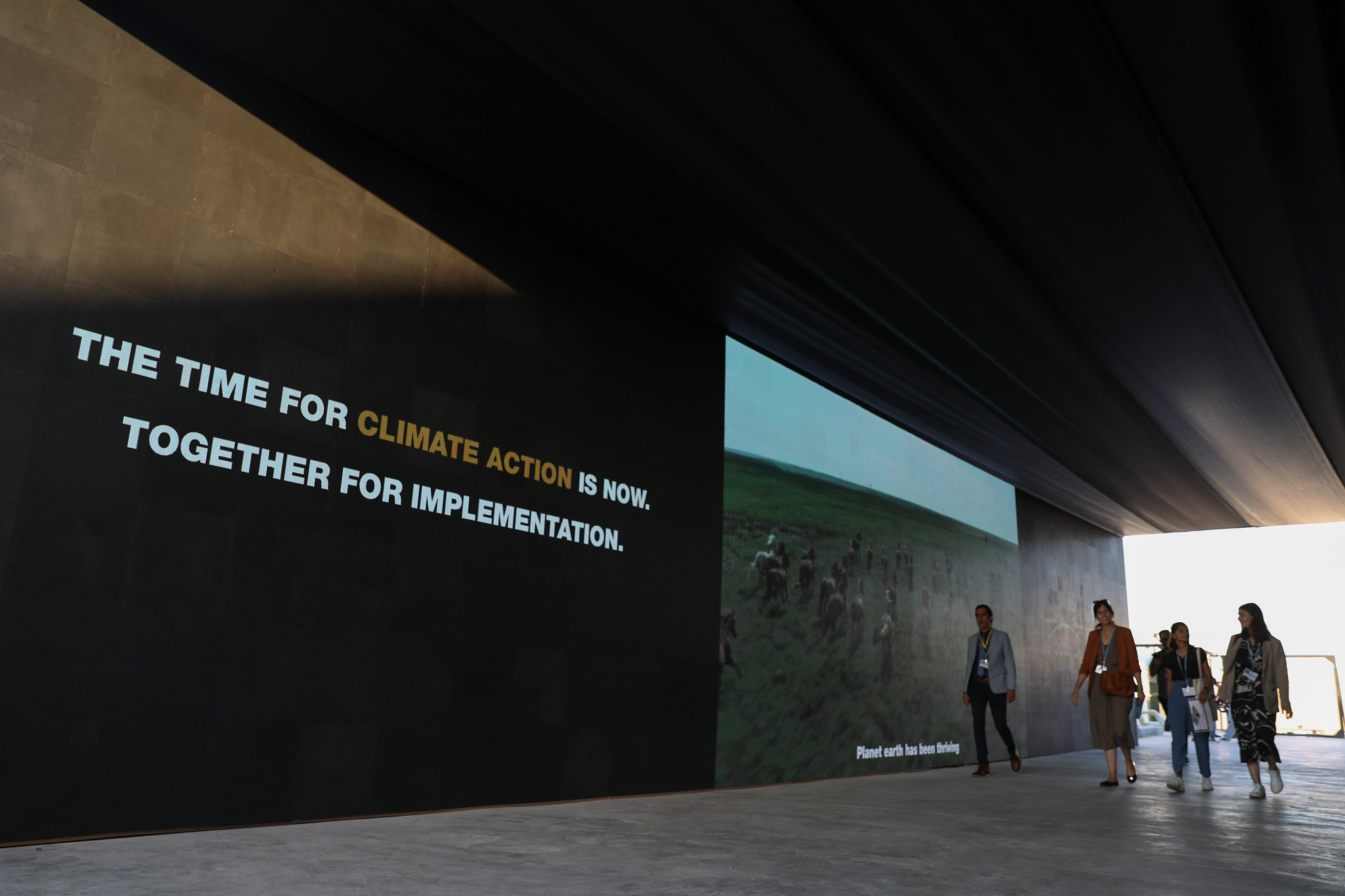Reflections from COP27: How can CGIAR scientists be even more actively engaged in global climate processes?
- From
-
Published on
18.11.22
- Impact Area

Authored by Aditi Mukherji, Director, CGIAR Climate Adaptation and Mitigation Impact Area Platform
This piece was written at the end of COP27 in 2022, reflecting on the significant contributions of CGIAR scientists, and how they can be even more actively engaged in global processes for climate change adaptation and mitigation.
Today is the last official day of COP27, though the rumour is that negotiations will stretch into the weekend, given that many texts remain open in the cover document. The main objectives of these UNFCCC COPs are “to stabilize greenhouse gas concentrations in the atmosphere at a level that will prevent dangerous human interference with the climate system, in a time frame which allows ecosystems to adapt naturally and enables sustainable development.” Yet, the recent IPCC WGIII report and UNEP emission gaps report show that GHG emissions are still on the rise, and we are on a pathway to exceed 1.5°C as soon as by the middle of the next decade. Profound and unprecedented impacts are being felt in several natural and human systems.
Most impacted is the agriculture sector, where smallholder farmers, pastoralists, and fisher folks in the Global South, where the CGIAR works, are disproportionately affected as they are most climate exposed and vulnerable. Losses and damages have already happened, and some systems and regions are seeing soft and hard adaptation limits being reached. Smallholder farmers — CGIAR’s primary constituency — are already facing soft limits, such as a lack of finance, capacity and technology to adapt to climate change. These realities have made the Loss and Damage and Global Goal on Adaptation elements of the COP27 agenda particularly urgent, with the vulnerable countries demanding that they be compensated for these losses and damages and provided finance for adaptation and mitigation.
While the negotiations have not yet yielded agreements on finance or even global goals on adaptation, what stands out in the cover document of this COP is the multiple references to the importance of scientific knowledge in informing these processes. For example, IPCC science is referred to frequently in the document as a justification for the content of the cover document.
This brings me to what I wanted to discuss in this blog. How can we, the CGIAR scientists, ensure that our science and solutions find a place in these global discussions and we proactively inform these processes? I know many of us are deeply involved in these processes, e.g., in the Koronovia Joint Work on Agriculture and the IPCC as authors, and possibly several other processes that I am not yet aware of. An internal community of practice to discuss and organize our collective engagement will help us to engage more deeply and effectively. CGIAR’s newly-established Impact Area Platform on Climate Adaptation and Mitigation, which I have been appointed to lead, can serve us in this regard.
Meanwhile, what can we as scientists do that embeds the knowledge we generate into these global processes going forward?
- The Africa Group of Negotiators negotiating Global Goals on Adaptation wants an IPCC report on this topic. There is indeed a vast knowledge gap on adaptation metrics, i.e., how to measure the effectiveness of adaptation in reducing climate risks; or if adaptation remains effective at higher levels of global warming. Assuming there is a Special IPCC Report on this topic, they will look towards peer-reviewed articles for evidence. I was involved in the Sixth Assessment Report (AR6) cycle, where I participated in a Global Adaptation Mapping Initiative, and we concluded that evidence on adaptation effectiveness was sparse. This is an excellent opportunity for us to fill this research gap by publishing high-quality peer-reviewed articles that particularly look at adaptation metrics and effectiveness, among other things. These peer-reviewed publications will then find a place in any assessment of Adaptation Goals.
- The Global Stocktake, which is currently still accepting inputs before it finalizes its Technical Report in March, is another opportunity for us to contribute proactively to their process by holding workshops and feeding the information to them for their Technical Report. This is one of the tasks that the Impact Area Platform on Climate is happy to engage with CGIAR scientists on over the next few months.
- Many CGIAR scientists have also been involved in some of the COP Presidency Initiatives, e.g., FAST and AWARe, where we have provided inputs into theirformulation and then participated in the launch events. We must find ways to keep ourselves involved in those initiatives as they further develop, to ensure that they are evidence- and data-driven, in the lead-up to the next COP in Dubai.
What are the other ways in which One CGIAR scientists can remain involved in these global processes? I would love to hear your ideas and suggestions, and I look forward to working with the CGIAR climate community in my new role as the Director of the Climate Adaptation and Mitigation Impact Area Platform of the CGIAR.
—–
Learn more about CGIAR’s Climate Adaptation and Mitigation Impact Area here.
Aditi Mukherji can be reached at a.mukherji@cgiar.org.
Header image: At COP27 in Sharm El-Sheikh, Egypt. Photo by UNFCCC
Related news
-

Mapping for Resilience: How Spatial Data is Transforming Karamoja Cluster
Ibukun Taiwo02.07.25-
Climate adaptation & mitigation
Pastoral communities in the Karamoja Cluster (a region spanning Kenya, Uganda, South Sudan, and Ethi…
Read more -
-

Building Resilience and Regeneration: The Central Highlands Ecoregion Foodscape (CHEF)
Sehlule Muzata02.07.25-
Climate adaptation & mitigation
At the CGIAR Sustainable Farming Program (SFP), we believe that collaboration is essential for trans…
Read more -
-

Planting with Precision: How Weather and Climate Information is Changing Bean Farming in Rwanda
The Alliance of Bioversity International and the International Center for Tropical Agriculture (CIAT)01.07.25-
Climate adaptation & mitigation
Imagine weather information as a GPS for farmers. Without it, the journey becomes uncertain, filled…
Read more -
